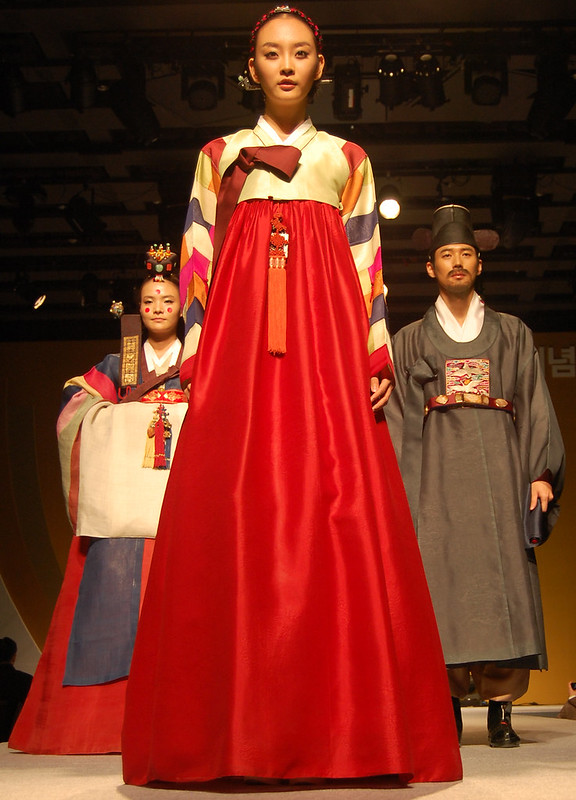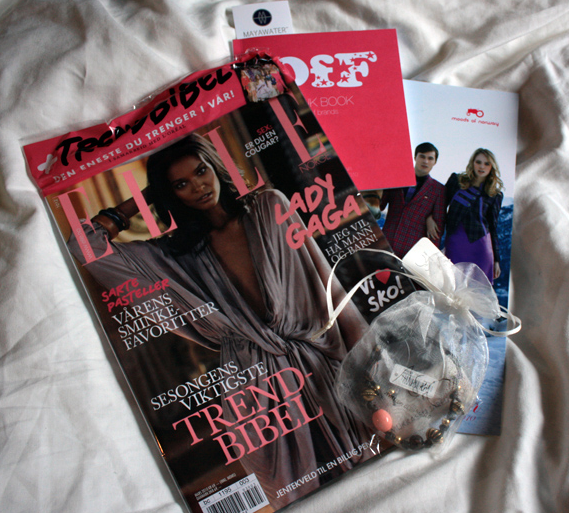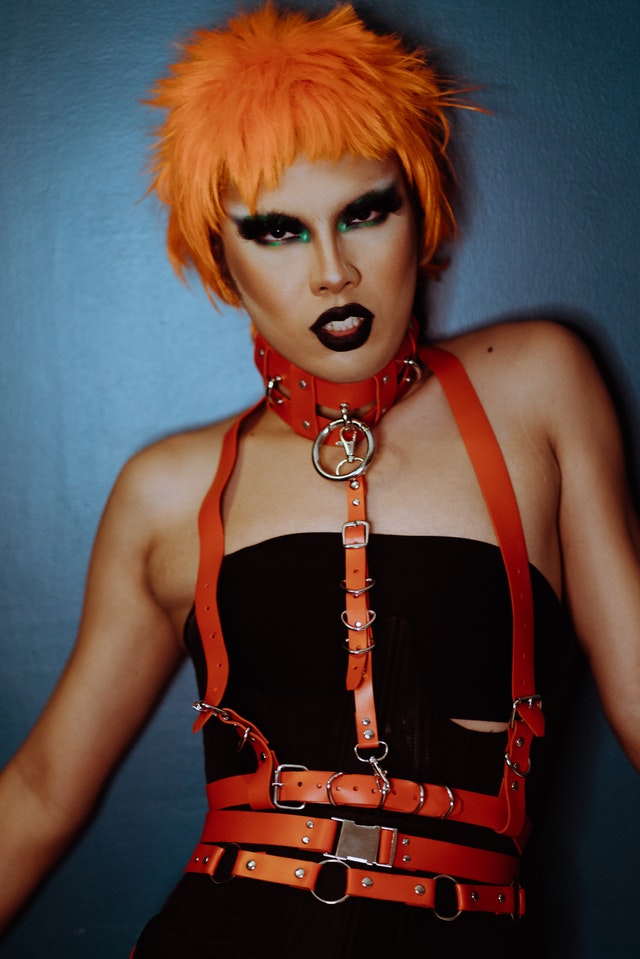Use of Other Cultures in Fashion
v Culture
In this chapter, you will
- MLO 5.1 Identify foundational concepts and theories related to culture, identity, and dress. [CLO 1]
- MLO 5.2 Identify the factors that influence different cultural aspects of apparel. [CLO ane]
- MLO five.iii Place the different cultural perspectives an individual tin take to approach agreement the wearing apparel and identity of others. [CLO 1]
- MLO 5.4 Explain the role of dress in identity development. [CLO 1]
- MLO five.v Examine how marginalized communities in the United States use dress and appearance to negotiate their identities. [CLO 2]
- MLO 5.6 Deconstruct your own perspectives and approach to agreement the dress of others. [CLO 4]
Culture refers to aspects of human-made elements including tools, clothes, and media in improver to values, attitudes, and norms. Clothes is a meaning function of about every civilization.
As more than cultures have cantankerous-cultural contact, people from brainstorm to modify aspects of their cultures by incorporating aspects of unlike cultures they come into contact with. This includes changes in clothes. This procedure of cultural modify is often referred to as cultural authentication . It should be noted though, that at that place is a long history of forced absorption, peculiarly for Native or Ethnic communities in Northward America (Petty, 2018). That is, Native communities were forced to digest into European civilisation; Native people were not interested in incorporating European cultural elements.
Civilization vs. Cultured
All people take civilisation. Civilization is non something held only past society elites, such equally but the wealthiest, most educated, or most sophisticated.

A. Civilisation is a organization of learned beliefs patterns that are characteristic of the members of a club (Hoebel, 1958). Notation the emphasis on the learning of behaviors or ways of doing things. Culture is learned, and individuals learn civilisation through an ongoing procedure of socialization. Parents, families, schools, peers, workplaces, for example, all socialize individuals to means of doing things. We notice differences beyond cultures in dress, language, food preferences, and other behaviors in part because these are learned behaviors—non knowledge that is innate, instinctual, or determined by genetic programming.
Cultural patterns are feature behaviors and oftentimes include a complex assortment of choices. A culture may afford more ane way of doing the aforementioned thing. Hence, diversity in behaviors may be constitute in some aspects of whatever civilisation
B. Civilisation is a complex whole that includes knowledge, conventionalities, art, morals, law, customs, and any other capabilities and habits that members of a society acquire (Linton, 1936). Linton emphasized that culture is a circuitous whole—a network of behaviors related to all aspects of life. Dress is shaped by and reflects many characteristics in any culture, so dress is a complex map of cultural characteristics.
C. Culture includes both abstract and concrete components (Scupin, 1998).
Abstruse components include the meanings of symbols, events, activities, or actions and how the meanings are created and selected. Physical components include the forms of action, behavior, result, activity, or artifact. Clothes may be a concrete object, such as a shirt, a pair of shoes, or a hairstyle, but those concrete artifacts develop meanings in a civilization. The fashion process, situations in which we apply dress, and groups associated with wearing of types of dress all bring significant to those artifacts.
D. Culture is mentifacts, what people know; sociofacts, what people do; and artifacts, what people make (Spradley, 1972):
Mentifacts: Ideas, Ethics, Values, Knowledge, and How We Know
Culture shapes how people think about things. Mentifacts are the ideas, values, and knowledge that shape how we encounter a culture and how we know or recognize patterns. This includes stereotypes that are held about groups of people who wait a certain manner. Note that "how we know" also refers to educational and media systems. Fashion magazines are role of these media systems, so are tv and the Internet.

How people in a culture think and what they value are often reflected in apparel. For example, in the The states, where nosotros value the freedom to consume and material plenty, consumers tend to prefer big wardrobes (Sproles & Burns, 1994). In some European countries, the average consumer has a insufficiently minor wardrobe that often includes several high-quality, expensive items. These few items are worn over and over during the season in which they are fashionable.
Sociofacts: Characteristics of Social Organizations and How People Organize Themselves.
Sociofacts reflect how people behave in groups and social interactions. For instance, law officers article of clothing uniforms to bespeak their occupations and rank within the law. A store like Target has a compatible dress lawmaking—cherry-red shirts and khaki pants—to assist customers identify employees. Many individuals dress upwardly or "clean up" when going to dinner at someone's house. This small act shows respect to the hosts and indicates participation in a social issue.
Sometimes patterns of dress in the larger society reflect how people organize themselves. In the U.s. today, socioeconomic status is ordinarily just vaguely communicated in our clothing. One hundred years ago, the social class of everyone passing us on the street would have been made clear by their clothes.
Artifacts: Things People Make and Tools and Processes for Making Them

Dress such every bit clothing, makeup, tattoos, and shoes are artifacts made by people. Artifacts reflect multiple aspects of a culture, such as mentifacts, sociofacts, and the technological knowledge of a culture that shapes manufacturing processes and materials used. For instance, Gore-Tex fabric, now used in high-performance sportswear, was invented through the NASA space plan.
Technological advancements and economical reality may exclude some clothing options. In set-to-article of clothing clothing that well-nigh people in the Usa buy today, only simple seams, darts, and a few gathers comprise construction. Knits and pandex rather than intricate construction details accomplish, a tight fit. During the 1940s and before, however, ordinary clothing often had many tucks, darts, godets, complex seams, for example. The handwork and sewing skill required for those designs is besides expensive to produce today in assembly-line factories. Complex fit through construction as well requires customized fitting that is likewise expensive, time-consuming, and hard for most of united states. We relieve that expense for business suits and special-occasion garments such as wedding dresses.
Anthropologists disagree on how to distinguish the terms culture and lodge. We volition utilise the terms fairly interchangeably. One definition of order is "a group of people living and working together in a systematic mode" (Mead, 1934). An important implication of this definition is that gild requires people to coordinate their actions with each other. Each individual cannot haphazardly practice their ain affair with no concern for others. With no traffic laws, for example, we would run into each other fairly frequently. Indeed, with no coordination of human effort, automobiles and roads would never have been invented. Apparel would have no pregnant; fashions and traditions in dress would not be. We would have no idea who anyone might be on first coming together of them. Wearing apparel is a product of systematic man interaction, and it helps u.s.a. to coordinate our interactions with others.
What Factors Influence Types of Dress Worn in a Culture?
Ruth Bridegroom (1959) drew an "arc of human potential" to indicate that every culture makes choices from amongst a wide array of possibilities for any grade of behavior. Each civilisation, then, chooses different language sounds, foods, dress materials and designs, and other behaviors.
In any culture, the following factors shape choices for dress and other behaviors:
- climate and natural resource
- religion, credo, ritual
- technology
- culture contact and improvidence of ideas
- social and political organization
- history
- artful rules.
This short movie features the Korowai tribe, whose members had no contact with anyone outside of their community until the 1970s. This isolation affected their dress in numerous ways.
To access a transcript for the video above, download this file: The Tree House People Korowai Video Transcript [DOC]
Principles of Cultural Perspective
Taking a cultural perspective on dress throughout the semester requires that we adopt specific some ways of thinking about people and the globe:
Holistic approach
The meaning of dress can exist understood only through the study of all aspects of a culture. Dress does non hateful one single affair at a time. Many meanings and aspects of a civilisation are embedded in any example of apparel. And sometimes these meanings are difficult to read. For example, why is it that in the United States, where nosotros value individuality and then much, so many students on college campuses wear jeans and T-shirts to classes?
Cultural relativism
Seek to understand dress equally it has meaning to a society "insider." What dress worn in countries outside your dwelling state means to you, a visitor or tourist in the country, is non necessarily related to what it ways to people in that culture. Nosotros need to examine the characteristics of a culture and talk to people inside that civilization to find out what their dress means. Something every bit simple as color may have very dissimilar meanings in dress in different cultures. For example, ruby-red is a common funeral color in Republic of zambia, Africa, and a wedding ceremony clothes colour in traditional China. What would information technology mean if someone wore a bright red dress to a close relative's funeral or a bride wore a bright crimson dress to her wedding in the Us today?
Ethnocentrism
Ethnocentrism is judgment of people of other cultures by 1'due south own cultural standards and behavior. Dress that is different from our own can exist challenging to take or appreciate.
Ethnocentricity is hard to avoid, for example, when members of other cultures or some groups within our own culture do things to the body that are harmful to the individuals. Acting to terminate these practices may be seen as important for humanity. It is every bit important to recognize, nonetheless, that these practices may accept deep meanings and roots in religious values or dazzler standards previously considered proficient or "healthful." Simply marching in and making such practices illegal volition not necessarily end them. We must take bang-up care when nosotros effort to change deeply held beliefs nearly these practices. Change is likely to exist slow.
Sometimes it can be quite hard to avoid ethnocentrism. Here are some examples that individuals may or may not view every bit harmful:

- corset wearing
- human foot bounden
- tanning
- spider web sites promoting anorexia
- female circumcision
- niggling people lengthening their legs
- embracing one'south transgender identity
- women exposing their breasts in public
- steroid utilize
- scarification, or the carving of permanent designs in the pare
- practicing chains and subject, say-so and submission, sadochism and masochism (BDSM) or kink such as wearing dog collars, chastity belts, or other restrictive garments.
Watch this short video near BDSM dress, identity, and women'due south empowerment. The inquiry presentation is titled "Paddles, Strap-Ons, Latex, and Leather: Negotiations of BDSM Women's Wearing apparel, Embodiment, and Bodies in Movement through Spatial-Temporal Dynamics."
The video highlights how these women embrace their BDSM identity when others sometimes view these practices as harmful.
Another term related to changing cultural aesthetics or norms is cultural appropriation. The concept of cultural appropriation is highly debated. For example, in a video that went viral, Amandla Stenberg discusses her opinions about white people adopting Black hairstyles (2015). Stenberg discusses how the adoption of hairstyles such as braids or cornrows by white people is wrong because when Black people wear these styles, they are viewed as "thugs" or "gangsters," even so when white people adopt these styles they can be seen as "cool" or "edgy," which reinforces longstanding racial hierarchies and stereotypes of white people having power. In that location are likewise arguments such every bit appreciation versus appropriation, where individuals will debate that their adoption of a particular style or aesthetic is non incorrect; they simply appreciate that part of another culture (Brucculieri, 2018).
In the following film, virtually 28 minutes long, Denise Greenish of Cornell University delivers a compelling lecture on cultural appropriation and the Cowichan sweater (CTV News, 2015).
To access a transcript for the video above, download this file: What is the cost of not fitting in Video Transcript [Physician]
In this short film, Bethany Yellowtail, an Indigenous designer, discusses her experiences as a fashion designer and cultural appropriation.
To access a transcript for the video in a higher place, download this file: Indigenous Cultural Appropriation in Fashion with Bethany Yellowtail and James St. James Video Transcript [DOC]
Puri, Due south. "Ethnic manner" obscures cultural identity. Yale Herald. (February ii, 2001). Accessed November one, 2021, via the Internet Archive: http://www.yaleherald.com/archive/xxxi/2001.02.02/opinion/page12aethnic.html
Benedict, R. (1959). Patterns of culture. Boston: Houston Mifflin.
Hoebel, Eastward. A. (1958). Man in the primitive globe: An introduction to anthropology (2nd edition). New York: McGraw-Hill.
Linton, R. (1936). The study of man: An introduction. New York: D. Appleton-Century.
Mead, Thou.H. (1934). Mind, self, and society (Ed. by Charles Westward. Morris). Chicago: Academy of Chicago Press.
Scupin, R. (1998). Cultural anthropology: A global perspective (3rd ed.). Upper Saddle River, NJ: Prentice-Hall.
Spradley, J. P. (1972). Culture and cognition: Rules, maps, and plans. San Francisco: Chandler Publishing.
Sproles, G. B., & Burns, L. D. (1994). Changing appearances. New York: Fairchild.
Step I: Become familiar with the case study.
- The example study attached beneath is a Word document and can exist downloaded. It includes the task, evaluation, and template for the case study:
Culture Example Report [Md]
Step Ii: Submit your complete consignment on Canvas.
- Format your document.
- Retrieve to check the submission against the rubric.
0 Response to "Use of Other Cultures in Fashion"
Post a Comment